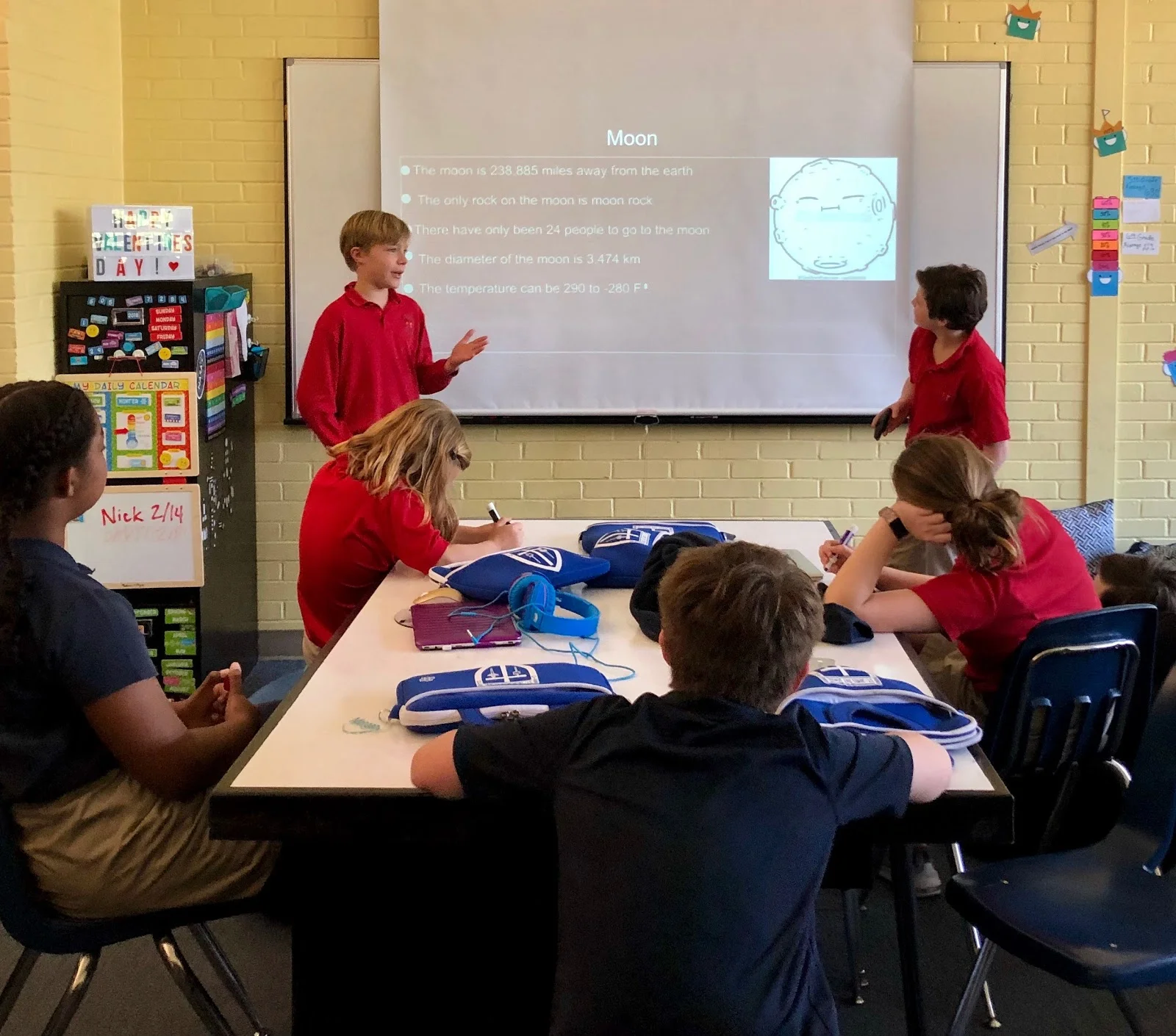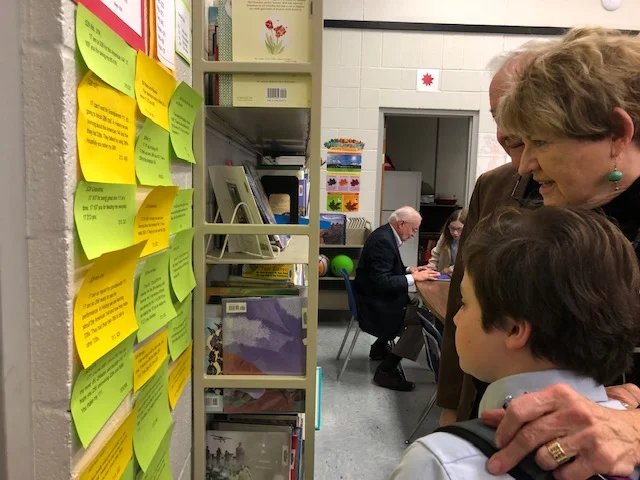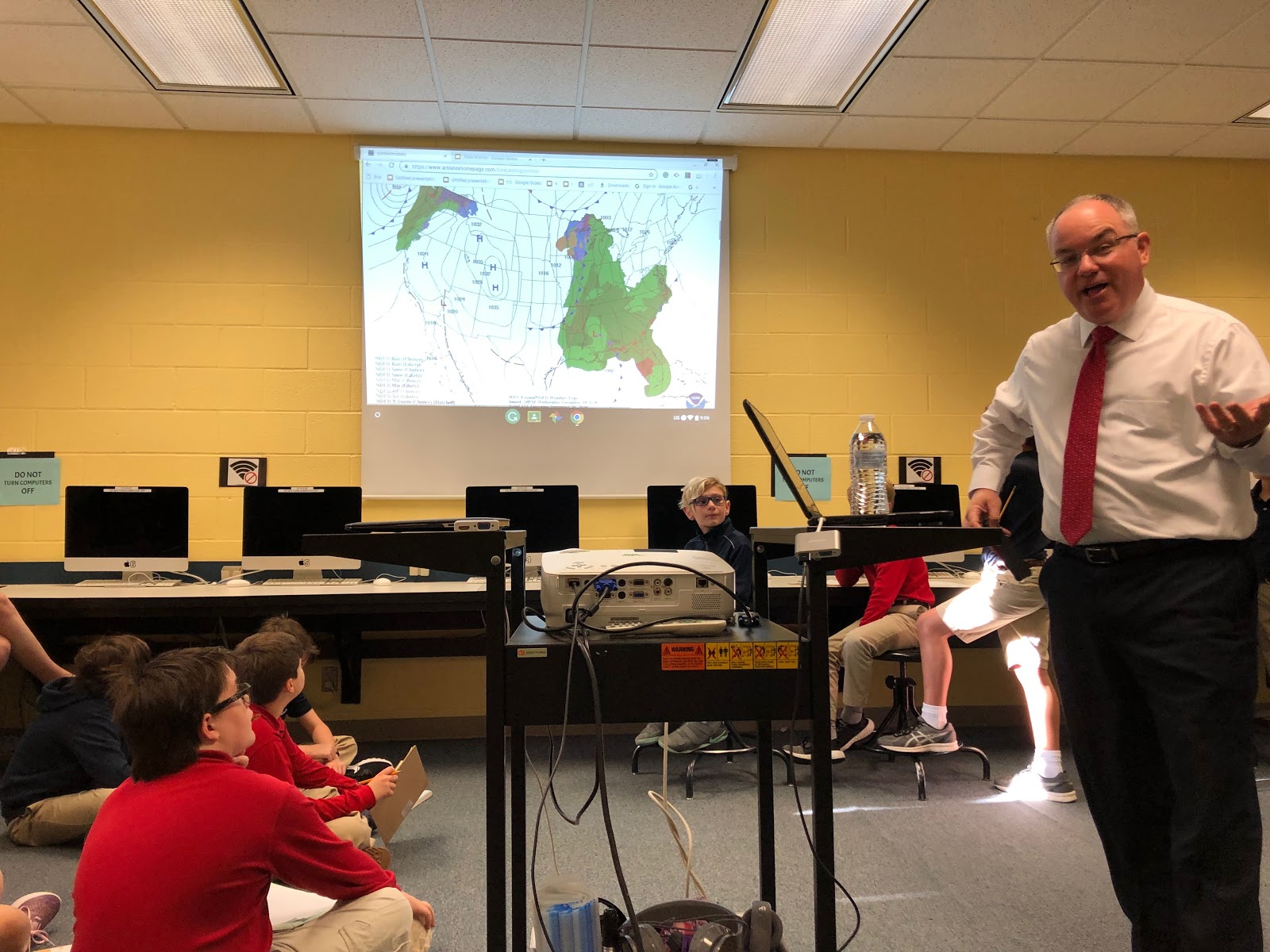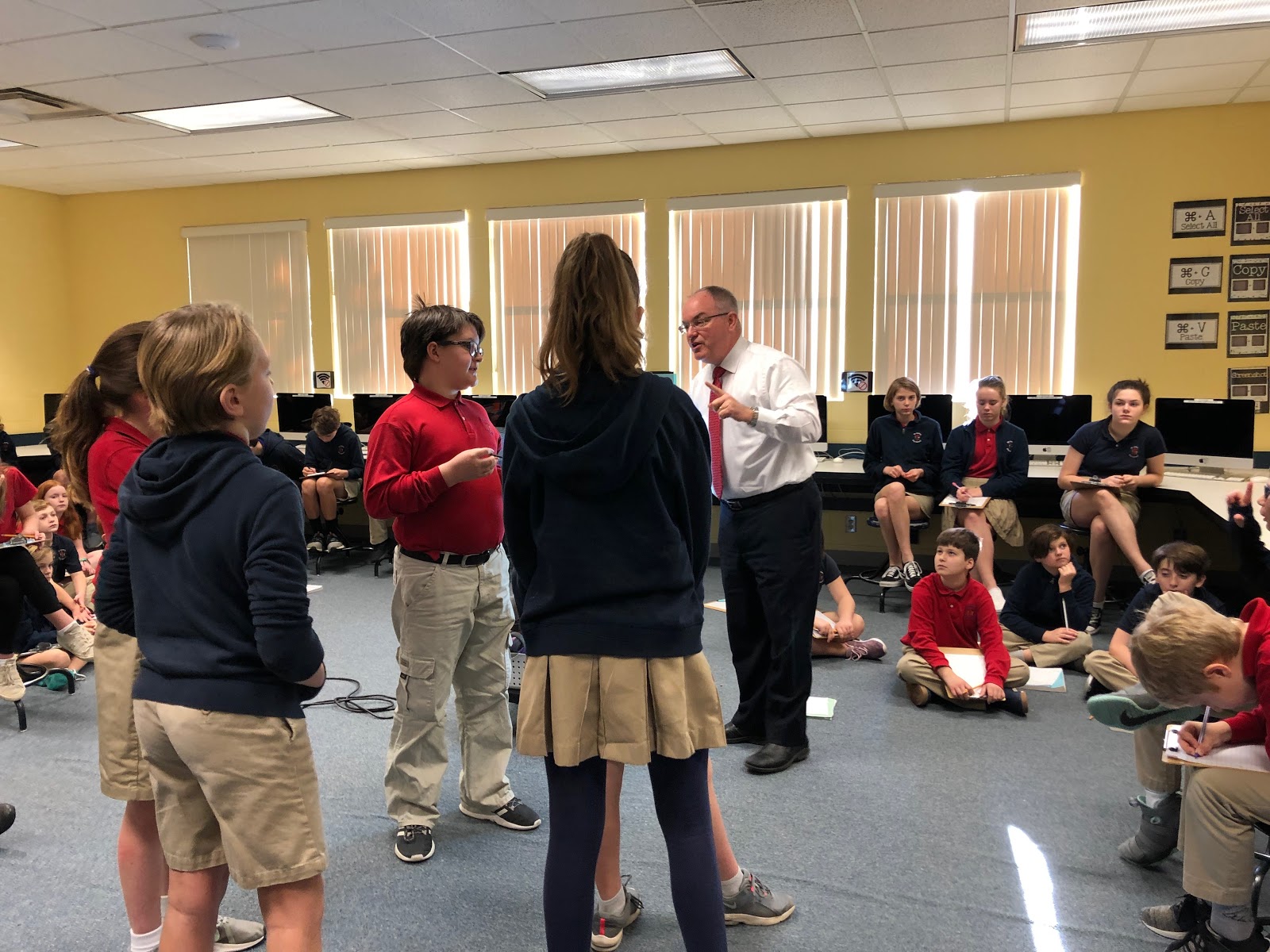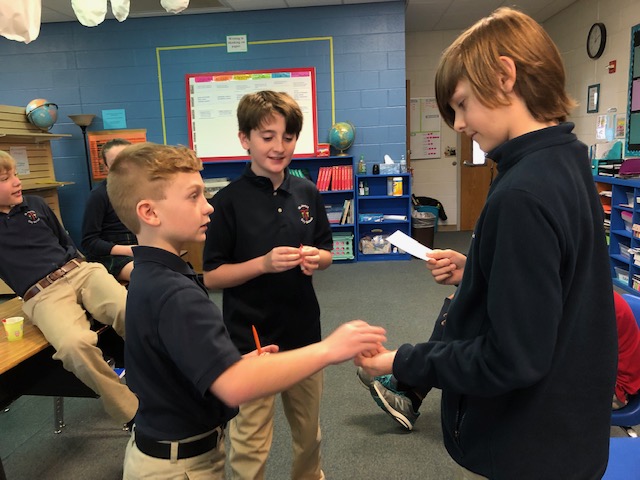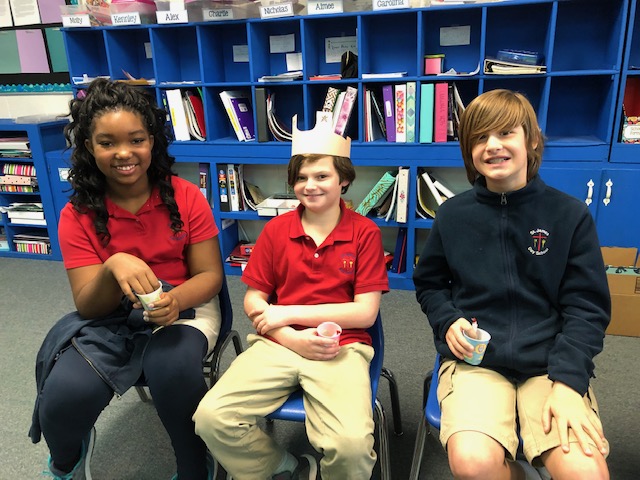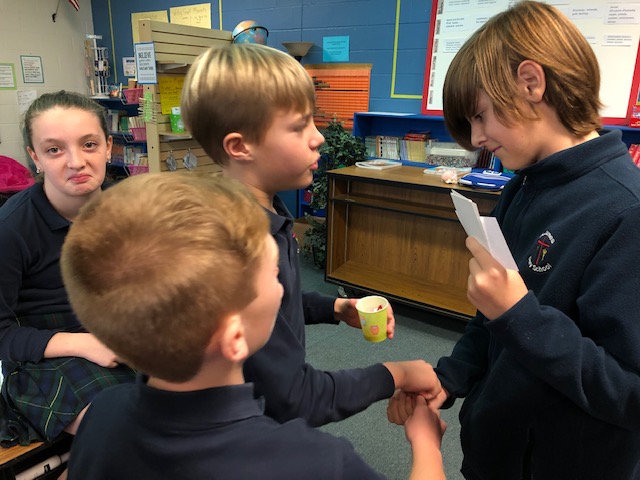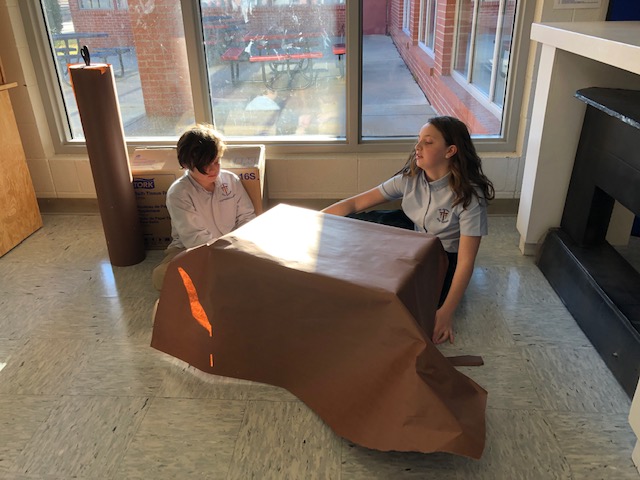MATH AND SCIENCE:
ONE SMALL STEP…ONE GIANT LEAP
We choose to go to the moon. We choose to go to the moon in this decade and do the other things, not because they are easy, but because they are hard, because that goal will serve to organize and measure the best of our energies and skills, because that challenge is one that we are willing to accept, one we are unwilling to postpone, and one which we intend to win, and the others, too. ~John F. Kennedy, 1962
It’s difficult for our kids to imagine what it was like before the lunar landing, to imagine a time when going to the moon was one of the greatest challenges set before our nation. We spent some time reflecting on the greatness of landing on the moon by looking both to the past, as well as to the future. What future? What is our “next giant leap”? Mars!
The middle school took our learning out of this world by diving in to a multi-grade investigation of the solar system. Fifth grade stayed somewhat close to home with their research of the Sun, Earth, and Moon. Sixth grade traveled far and wide as they studied the other planets and moons of our solar system, including the dwarf planets (can we please bring Pluto back?). Seventh grade took a deep look into what it would take for humans to live on Mars. Each student and grade shared their findings with one another in whatever manner they found most effective and engaging. We had great fun learning, as the students became the teachers.
LANGUAGE ARTS AND HISTORY:
Fifth grade has been writing, writing, writing! We are wrapping up our American Revolution unit in History, and students have written short biographies of some well-known and other less known historical figures. Students are organizing their biographies into a newsletter that we will share with parents next week. Fifth graders also learned about the first spy ring in America that was run by George Washington during the war. Like the spies, they wrote coded messages to their grandparents for our annual Grandparents Day.
The writing fun continues in Language Arts, wherein the class just completed a magazine project that showcased their knowledge of the five informational text structures. Each student chose a topic important to him or her and wrote articles in each of the text structures. They hand-drew covers and ads highlighting their topic. What an impressive array of magazines they produced-- topics ranged from art to dove hunting to Disney cruises to Pokemon!

